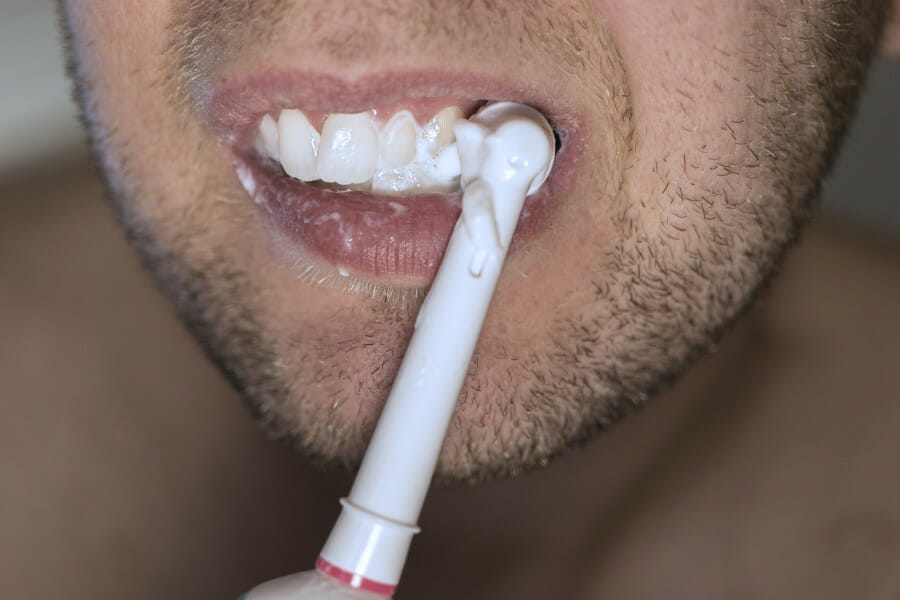Understanding the Latest Trends in Cosmetic Dentistry for Teeth Whitening
Research shows that 57% of Americans tend to cover their mouths when laughing because of teeth insecurity, while one in two often smiles with their mouth closed, demonstrating a common concern over tooth appearance according to a study by OnePoll. Teeth whitening has become a popular option, especially with the availability of at-home whitening products. From different whitening methods to potential risks, here is an overview of one of the most sought-after trends in cosmetic dentistry.
Exploring Tooth Discoloration
Teeth whitening techniques are a simple solution for those with discolored teeth. It’s essential to understand that tooth discoloration can occur due to various reasons, with two main types to consider. Extrinsic discoloration affects the outer layer of the teeth and can result from consuming foods, beverages (like coffee/tea/red wine), colorful foods, and tobacco use, as outlined by Healthline. Healthline further explains intrinsic discoloration, which originates from within the tooth itself, possibly due to factors like medication, tooth damage, or aging. While consulting a dentist is crucial to determine the most suitable treatment, the American Dental Association (ADA) mentions that whitening treatments can effectively address both extrinsic and intrinsic discoloration. However, it’s important to remember that only natural teeth can be whitened, not tooth-colored restorations.
Various Teeth Whitening Methods
For individuals seeking a brighter smile, there are several teeth whitening options available. Healthline categorizes whitening methods into three groups: those administered by dentists, those prescribed by dentists for at-home use, and over-the-counter products or DIY solutions (like whitening toothpaste, strips, etc.). While professional treatments usually contain higher amounts of active agents, over-the-counter products may take longer to show results, especially for intrinsic discoloration. It is advisable to consult with a dental professional to determine the most effective whitening method for your needs.
Apart from professional and over-the-counter whitening products, do-it-yourself teeth whitening techniques have gained popularity, often promoted through social media channels. Practices like oil pulling, using coconut oil to cleanse teeth, and activated charcoal are trendy, yet there is limited scientific evidence supporting their effectiveness in whitening teeth. It’s advisable to seek advice from a dentist for accurate information on DIY whitening methods and to verify the credibility of oral health information from reliable sources written by healthcare professionals to distinguish between myths and facts.
Recognizing Potential Risks
According to the ADA, one common side effect of over-the-counter or professional tray-based whitening treatments is tooth sensitivity, which is typically mild and temporary but can occur more frequently with higher concentrations of active ingredients. Risks associated with teeth whitening include potential gingival irritation from peroxide-based gels found in strips or gel-based products and misuse or overuse of whitening trays or strips, leading to tooth decay, sensitivity, and gum irritation. The Dental Health Society warns that the chemicals in whitening gels, if not used as directed, can harm teeth and affect gum health, potentially damaging nerves, blood vessels, and connective tissues within the teeth.
A radiant white smile is a common aspiration, and with the convenience of teeth whitening options, including at-home solutions, it’s no surprise that whitening has become a prevailing trend in cosmetic dentistry. However, it’s crucial to be aware of the diverse whitening methods available and the associated risks to make informed decisions.
!function(f,b,e,v,n,t,s){if(f.fbq)return;n=f.fbq=function(){n.callMethod?
n.callMethod.apply(n,arguments):n.queue.push(arguments)};if(!f._fbq)f._fbq=n;
n.push=n;n.loaded=!0;n.version=’2.0′;n.queue=[];t=b.createElement(e);t.async=!0;
t.src=v;s=b.getElementsByTagName(e)[0];s.parentNode.insertBefore(t,s)}(window,
document,’script’,’//connect.facebook.net/en_US/fbevents.js’);
fbq(‘init’, ‘1659360370986360’);
fbq(‘track’, “PageView”);(function(d, s, id) {
var js, fjs = d.getElementsByTagName(s)[0];
if (d.getElementById(id)) return;
js = d.createElement(s); js.id = id;
js.src = “//connect.facebook.net/en_GB/sdk.js#xfbml=1&appId=1042187652488583&version=v2.3”;
fjs.parentNode.insertBefore(js, fjs);
}(document, ‘script’, ‘facebook-jssdk’));(function(d, s, id) {
var js, fjs = d.getElementsByTagName(s)[0];
if (d.getElementById(id)) return;
js = d.createElement(s); js.id = id;
js.src = “//connect.facebook.net/en_US/sdk.js#xfbml=1&version=v2.4&appId=221591494559091”;
fjs.parentNode.insertBefore(js, fjs);
}(document, ‘script’, ‘facebook-jssdk’));
















